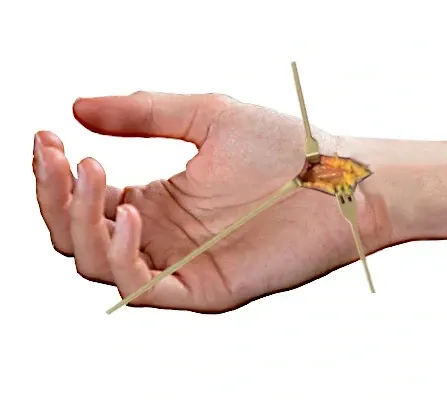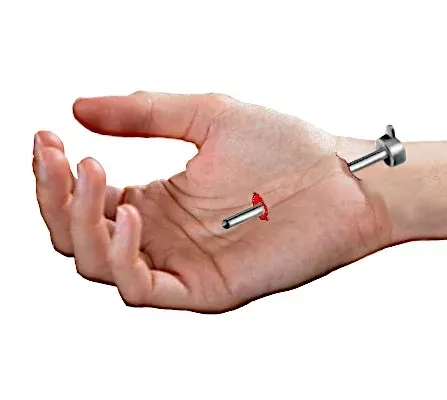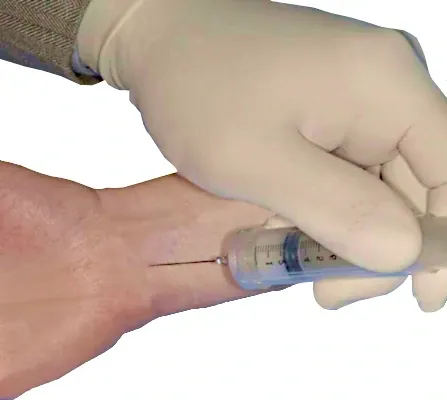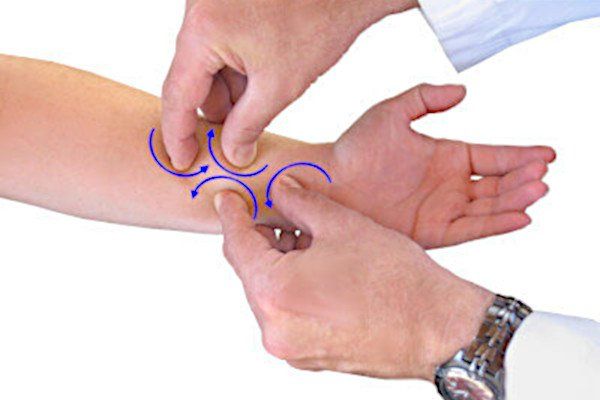Considering Surgery for Carpal Tunnel Syndrome?
You're reading this because your hand and fingers hurt or go numb. (Maybe both symptoms are bothering you right now.) Most times these feelings are intense.
These are the
main signs of carpal tunnel syndrome.
And at this point, you may be wondering
what surgery for carpal tunnel syndrome would be like.
And who can blame you for thinking about a hand operation? This debilitating condition can make even the most basic activities (e.g., typing an email, picking up coins, or brushing your teeth) difficult or painful.
Carpal tunnel is also often accompanied by
hand weakness and finger clumsiness. For instance, it's difficult to button a shirt, hold a phone, or tie a shoelace.
In short, going about your daily activities (and even
trying to sleep) is miserable.
This article helps you understand surgery for carpal tunnel in plain English. It describes:
- When hand surgery is recommended
- The success rate of surgery for carpal tunnel
- Types of carpal tunnel surgery doctors use
- How to treat carpal tunnel
without
surgery (really!)
Are you certain you have carpal tunnel syndrome and not tendonitis?
Take this self-test and find out.
Treating carpal tunnel syndrome with surgery
Most
hand doctors
recommend surgery for carpal tunnel syndrome. The surgery it is performed by a specialist. The procedure is called
carpal tunnel release surgery. There are two basic types;
endoscopic
or
open carpal tunnel release surgery.
Whichever type of carpal tunnel surgery you have completely depends on your doctor. He or she will have more experience with one or the other technique.
Both surgical techniques are usually performed under general anesthesia which is given by intravenous injection. This puts you to sleep.
For the endoscopic technique, sometimes a local "nerve block" is used instead. That means an anesthetic is injected anywhere from your hand to your armpit. This causes your arm and hand to be numb so you won’t feel pain during the procedure. But you are fully awake.
Both open and endoscopic surgical techniques aim to achieve the same result. That is,
relieving pressure on the median nerve. Once pressure is relieved, the nerve can recover and symptoms should dissolve.
When surgery is recommended
The
American Academy of Orthopedic Surgeons (AAOS) publishes guidelines for doctors who perform surgery for carpal tunnel syndrome. The AAOS advises doctors to follow 4 simple rules:
- The patient should have symptoms for at least 6 months.
- The patient should be in the
severe stages of carpal tunnel syndrome.
- Recommend using non-surgical (conservative) measures first, before considering surgery.
- The non-surgical measures should include night bracing, steroid injections, and myofascial release massage (or a combination of these).
Success rate of surgery for carpal tunnel syndrome
How successful your carpal tunnel release surgery will be depends upon
several factors:
- How long you have had carpal tunnel syndrome
- Whether symptoms are moderate or severe
- Your age
- Presence of chronic diseases, like diabetes or
arthritis
- Your overall health
In general, the combined success rate (using either surgical technique) is
approximately 50%. That means half of patient are satisfied with their results by the second year.
It's important to note that
studies have shown the effectiveness of surgery and non-surgical therapy are nearly identical at by the second year.
OPEN
SURGERY FOR CARPAL TUNNEL
ENDOSCOPIC
SURGERY FOR CARPAL TUNNEL
Treating carpal tunnel syndrome without surgery
STEROID INJECTION FOR CARPAL TUNNEL
Surgery for carpal tunnel syndrome is by no means the only way to effectively treat the condition. In fact, numerous studies have shown that non-surgical methods often provide the same or better long term results.
What are these treatments? Those used most often are a combination of
nocturnal bracing, steroid injections and physical (massage) therapy. These are outlined below.
MYOFASCIAL RELEASE MASSAGE FOR CARPAL TUNNEL
Conclusion
Many doctors recommend surgery for carpal tunnel syndrome. There are two basic ways to perform this operation: open and endoscopic. The open technique involves more post-surgical pan and recovery time. But it's also safer to use. The endoscopic technique produces less hand trauma, and thus recovery is quicker. But it has a higher rate of complications and failures. Each surgery has about a 50%. success rate. The American Academy of Orthopedic Surgeons advises doctors to first try conservative, non-surgical methods first. These include night bracing, steroid injections, and myofascial release massage.








